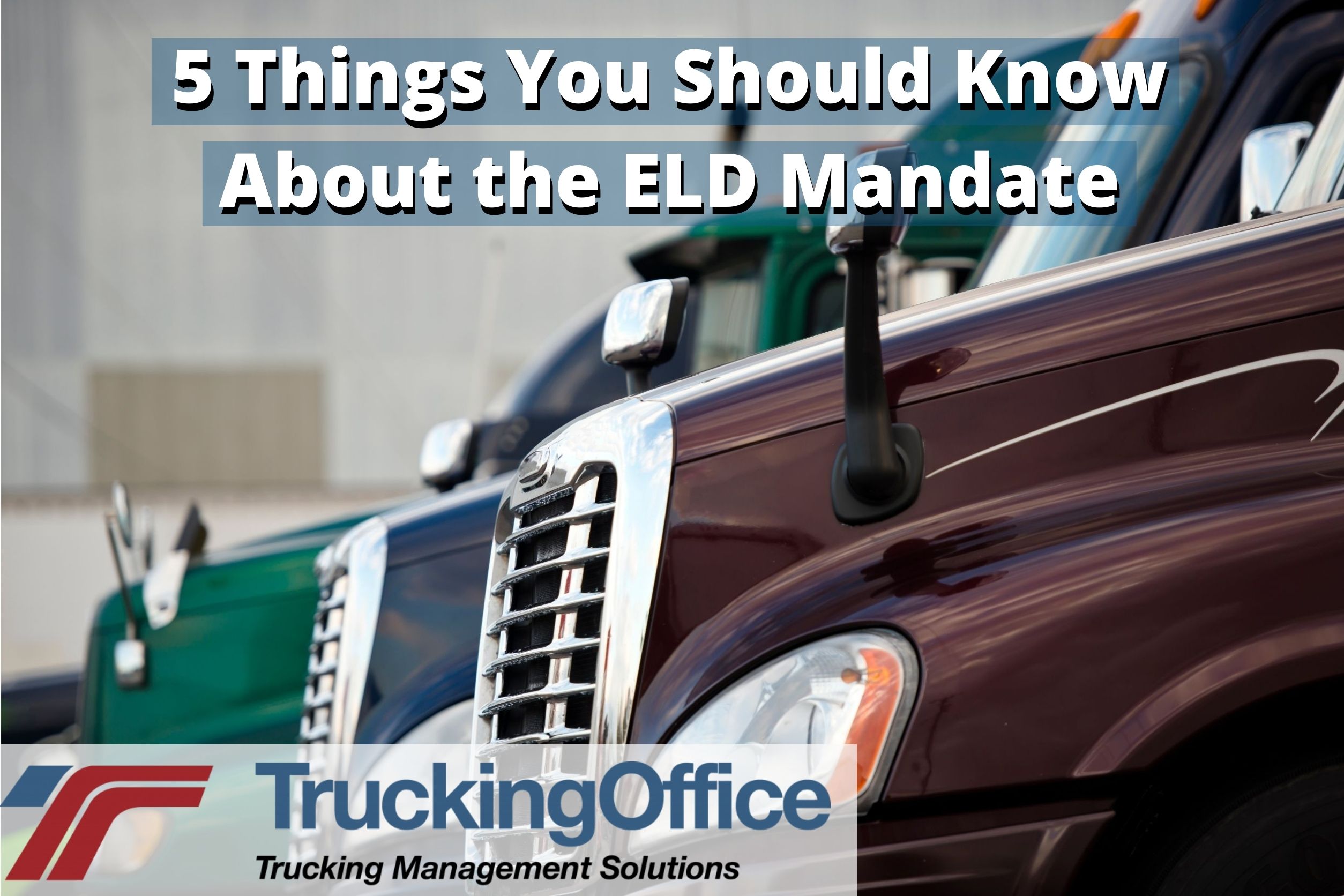If you’re new to the trucking industry, you may have discovered that learning to drive your truck was the easy part. The hard part of the job is learning the hundreds of safety and compliance rules and regulations. Then, there’s the part where you have to remember and adhere to them. All you want to do is drive and earn a living, so why are they making it so difficult?
Whether it’s the ELD mandate, IFTA, IRP, HOS, DOT, or HVUT, one thing you can count on is that the rules are always changing. You think you finally understand them, and then they’ll suddenly change again. Don’t be discouraged. It takes a little time, but you’ll find ways to stay on top of this aspect of being a trucker.
To help you get a good head start, here are 5 things you need to know about the ELD mandate.
#1. What is the purpose of the ELD mandate?
The electronic logging device mandate (ELD) was established by the Federal Motor Carrier Safety Administration (FMCSA) to improve highway safety. Under the mandate, drivers must report their Hours of Service (HOS). The goal is to keep track of driving hours to help reduce driver fatigue, which is the main cause of accidents among CMV drivers. The mandate also helps reduce paperwork for drivers who use the ELD devices and improves logging accuracy.
#2. Who does the ELD mandate impact the most?
With a few exemptions, the ELD mandate applies to all CMVs which meet FMCSA requirements. Vehicles that transport persons or property must meet the following criteria:
- Weighs 10,000 lbs or more.
- Is designed or used to transport more than 8 passengers (including the driver) for compensation.
- It can transport more than 15 passengers, including the driver, and is not for compensation.
- Is used in transporting hazardous materials in a quantity requiring placards.
The industries most likely to be impacted are freight and goods transportation, food distribution, construction companies, and passenger transportation companies.
#3. What are ELD exemptions?
Even if you meet ELD exemption requirements, you must still maintain HOS compliance. Here are the ELD mandate exemptions, according to FMCSA:
- Drivers of vehicles manufactured before the year 2000.
- Drivers who use paper RODS no more than eight days out of thirty.
- Towaway drivers who transport empty vehicles for sale, lease, or repair if the vehicle they are driving is part of the shipment.
If you don’t meet those criteria, you are required to have an ELD device in your vehicle and comply with all FMCSA regulations.
#4. When did the ELD mandate begin?
The ELD mandate deadline was December 18, 2017. So, if you’re new to trucking, you are required to be compliant right away.
#5. Which ELD devices comply with the mandate?
The FMCSA allows smartphones or tablets to be used for ELD if the system meets its requirements. The device must be able to be hardwired to the vehicle’s engine. Also, there are hundreds of ELD devices on the market today. The FMCSA list of self-certified, registered ELDs can help you make an informed choice.
Why You Should Choose our TruckingOffice ELD
Today, earning a living as a professional trucker can be one of the most stressful things you’ve ever done. But, it also has its rewards. At TruckingOffice, we want to make your job easier so you can enjoy those rewards. If you’re ready to choose an ELD for your operation, our device is reliable, affordable, and easy to use. Plus, we offer responsive, skilled tech support to ensure that any problems with your device are resolved right away.







Recent Comments